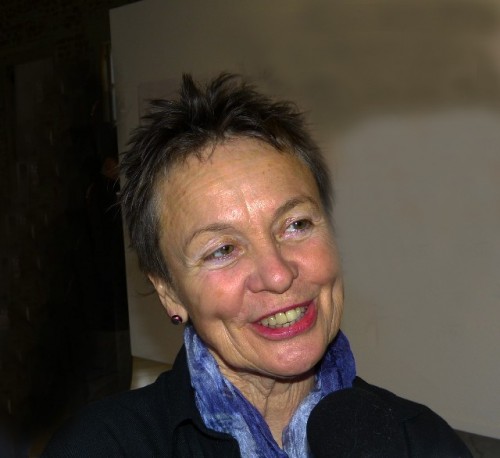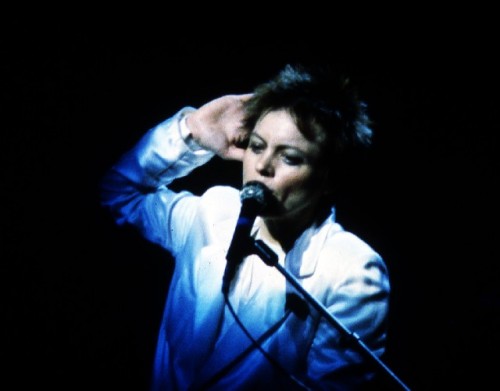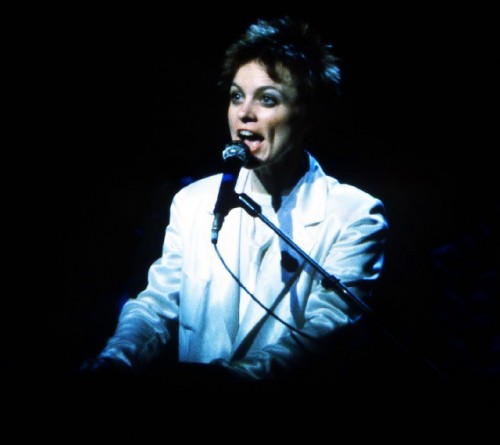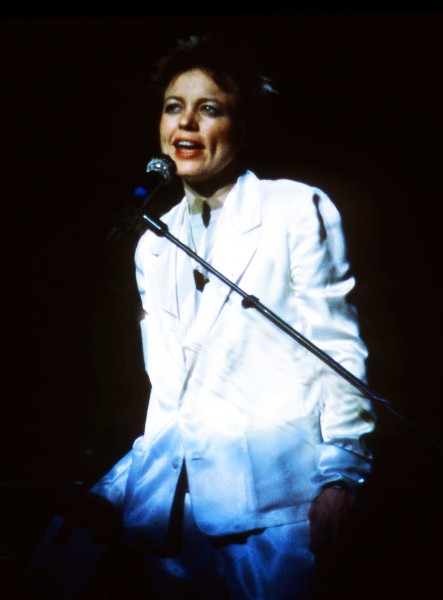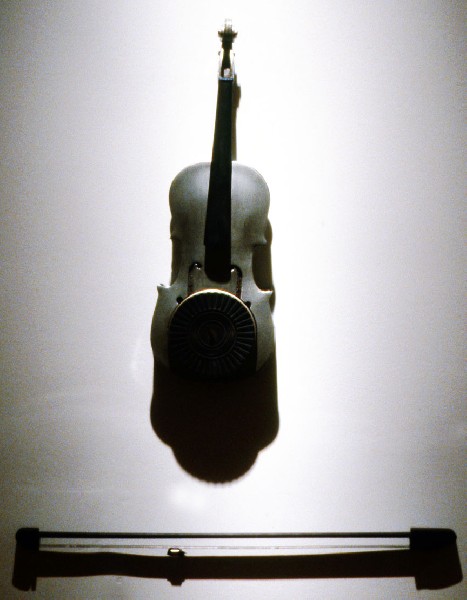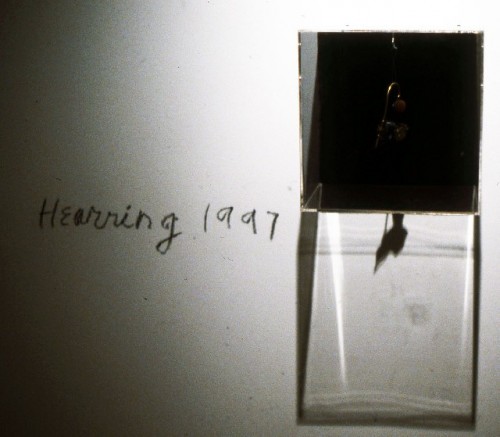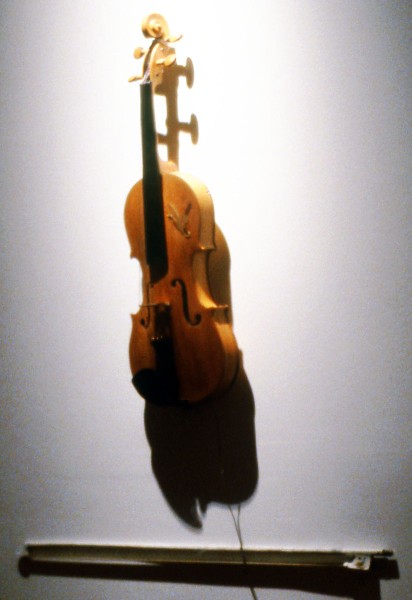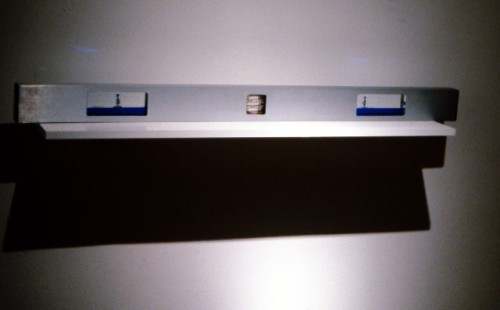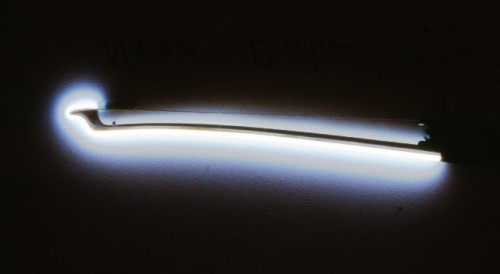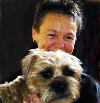Laurie Anderson’s Mass MoCA Project
Part of Phase Three Museum Expansion
By: Charles Giuliano - Nov 20, 2014
Multi media artist and musician Laurie Anderson is one of six artists chosen for extended installations in the buildout of Building Six of Mass MoCA. The $54.4 million project is planned to open in Spring, 2017.
When first informed of being included in the A list of artists she told the Washington Post “I thought, ‘This is wildly ambitious,’ so when he (Joe Thompson) called, literally, my jaw dropped.”
“Radio Anderson,” the working title of her project for Mass MoCA, will include a functional recording studio and archives for the material — from homemade instruments to drawings — that she has packed away or perhaps records on campus. Anderson also plans to do radio broadcasts from the space.
Over the years we have covered a number of her performances and exhibitions. Anderson is regarded as one of the most successful and innovative avant-garde artists of her generation.
With her border terrier, Little Will, she attended the recent press conference at the North Adams museum to announce Phase Three of developing former industrial space and the launch of the Confluence Campaign to fund it. MoCA is raising $30 million to match $25.4 from the Commonwealth.
Catching up with her during the media event I mentioned her prior residence in 2010 while developing the performance work Delusion. It was conceived as a series of short mystery plays that jump-cut between the everyday and the mythic. It combined violin, electronic puppetry, music and visuals. It was full of nuns, elves, golems, rotting forests, ghost ships, archaeologists, dead relatives and unmanned tankers.
After several weeks of working on the piece Anderson held an interview and demonstration with MoCA director, Thompson, in the Hunter Center. Delusion premiered at the Vancouver Winter Olympics. She returned that February with a performance at Williams College.
She reminded me that there have been other MoCA residences. With her installation as a studio to develop and record new works she anticipates being a frequent resident in the Berkshires.
I asked what it was like to stand on Melville’s lawn at his home Arrowhead in Pittsfield looking at the snow capped, humped mountain range that inspired his iconic tale of the white whale?
"Being around here I was thinking about how it inspired Melville. Looking at the mountain and writing a book about a whale was pretty delusional. I love the Melville quote 'What is a man if he outlives the lifetime of his God?' If it's gone how to go on if that (God) doesn't exist? This is (Moby Dick) one of a number of stories that answer those questions. It's not obvious about the question” she commented during the discussion with Thompson.
In 1999 she performed Songs and Stories from Moby Dick. The work entailed The Talking Stick then a new instrument she designed in collaboration with Interval Research and Bob Bielecki. It is a wireless instrument that can access and replicate any sound. It works on the principle of granular synthesis. This is the technique of breaking sound into tiny segments called grains and then playing them back in different ways. The computer rearranges the sound fragments into continuous strings or random clusters which are played back in overlapping sequences to create new textures.
"When I did Melville" she said, "His book didn't need to be multi media music and stuff. What for? I thought if Melville found out about it he would come and kill me. When I was working on Melville someone brought me Melville's Bible. It was filled with pencil notes and drawings. While working on Moby Dick he was reading Shakespeare and the Bible. The marks were erased by his wife. She thought he was defiling the family Bible. A friend got it for me at Sotheby's He took it to the FBI to see if we could read what was erased. They said it was too old.
"I am looking at it with a magnifying glass. I found something in Isaiah about the leviathan. It is an image of a whale as a snake. It's his Garden of Eden. It works out ideas of good and evil. It's a negative hex for me. I'm too much in love with the book and couldn't make something out of it and swore that I would write my own stuff after that."
Asked if the Bible had inspired her she responded “Bible stories. The first I heard was from flannel back people. I was surprised as a kid to hear adults talk about talking snakes. Adults. Wow. Talking snakes. I was entranced but thought they were mad. I loved that. I realized adults are crazy and thought this is just fantastic. Those are great stories. Who are you? Where do you come from? How do you explain time, power and love? Where do you go after this? How did the world begin? Plus they had a really big palette. Everything was talking like bushes and every living thing."
While know for playing violin often these are her own creations featuring electronic variations with a great range of sound possibilities. That approach to making music came a generation after John Cage.
For the avant-garde seminar which I taught at Boston University I liked to open the seminar with a video of Cage. It always threw the students for a loop during the first meeting of the semester setting the tone for the course. There were often outraged responses to Cage’s 4’33” composition scored for silence. It evoked basic questions about the very definition of art.
Anderson was interviewed in the Cage video and I asked what he had meant to her? Given his age when they knew each other she was amazed that he never stopped experimenting and by his creative energy in creating new works.
As plans evolve for the new building Anderson will develop ideas for the use of the space. It will include a recording studio which will be accessible to other musicians in residence at MoCA. There will also be a mix of her props for performances, graphic works and experimental instruments and sculpture.
During their MoCA discussion four years ago Thompson asked her "If there was a museum for Laurie Anderson what would it be like?"
She responded "At first I didn't try to save my work other than some photos and videos. Then I thought that yes it is good for you to have a retrospective. Marina Abramovic is a performance artist who is about to open a retrospective at MoMA. She has hired artists to recreate her pieces which are one way of doing it. Some of the works involve endurance from the Chris Burden School of performance. We have talked a lot about how to preserve performance works.
"I first saw her when she was partners with Ulay" she said. "There was an opening of an exhibition in Italy (June, 1977 at the Galleria d'Arte Moderna Bologna)." The artists were nude on opposite side of the entrance to the museum. Visitors had to squeeze between them and physical contact was unavoidable. The decision was whether to face and rub against the nude body of the man or the woman. Anderson described another piece in which the artists started from either end of the Great Wall of China. They met in the middle to break up and never see each other again. Well, that's one way of finding closure at the end of a relationship…
"At DIA I showed a lot of things of extreme scale. I was working on projects big and small for this exhibition. I was also doing a singing tree for a garden in Basel as part of a big Frank Gehry building and park. I thought let's do some kind of sound thing there with symphonic trees… It took a couple of years to get it together. There are some speakers that are very tiny and others not. The sound travels through the park."
Together Anderson and Thompson will face the challenge of answering what once was a hypothetical question.






